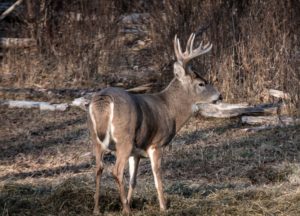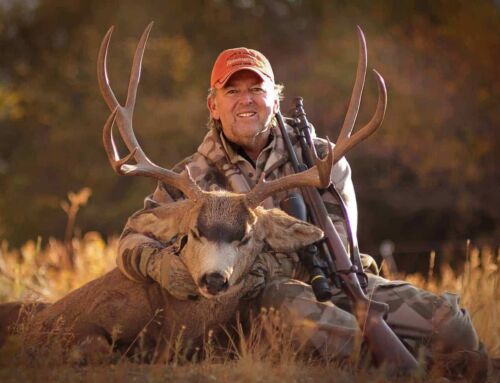 The U.S. Department of Agriculture’s (USDA) Animal and Plant Health Inspection Service (APHIS) recently completed a study that analyzed serum samples from free-ranging whitetail deer for SARS-CoV-2 antibodies. Results indicate that certain deer populations in Illinois, Michigan, New York, and Pennsylvania were exposed to the virus that causes COVID 19.
The U.S. Department of Agriculture’s (USDA) Animal and Plant Health Inspection Service (APHIS) recently completed a study that analyzed serum samples from free-ranging whitetail deer for SARS-CoV-2 antibodies. Results indicate that certain deer populations in Illinois, Michigan, New York, and Pennsylvania were exposed to the virus that causes COVID 19.
APHIS collected 481 samples between January 2020 and March 2021 from Illinois, Michigan, New York, and Pennsylvania. Scientists detected SARS-CoV-2 antibodies in 33 percent of those samples. The results varied by state: Illinois = 7 percent of 101 samples contained antibodies; Michigan = 67 percent of 113 samples; New York = 19 percent of 68 samples; and Pennsylvania = 31 percent of 199 samples.
It should be pointed out that there were no reports of clinical illness (fever, coughing, etc.) associated with SARS-CoV-2 in the deer populations surveyed, and clinical signs of SARS-CoV-2 have not been observed in wild deer.
Although, the results indicate that certain white-tailed deer populations in these States were exposed to SARS-CoV-2, APHIS says that should not be extrapolated to represent the prevalence of SARS-CoV-2 antibodies in deer populations as a whole.
Scientists do not know how the affected deer were exposed to SARSCoV-2. It’s possible they were exposed through people, the environment, other deer or another animal species.
The APHIS says there is no evidence that any animals, including deer, play a significant role in the spread of SARS-CoV-2 to people. Based on the available information, the risk of animals spreading COVID-19 to people (including hunters) is low.
The APHIS emphasizes that further research is needed on the significance of SARS-CoV-2 antibodies in free-ranging whitetails, including how the deer were exposed to the virus and the potential impacts, if any, to overall deer populations, other wildlife and people.
As you can imagine, like all things COVID, this breaking news has caused concern and confusion across many wildlife and hunting communities. Writing today in Penn State’s Deer-Forest Blog, wildlife biologist Jeannine Fleegle offers some much-needed level-headed perspective on the study:
All this means is that deer have been exposed to the COVID-19 virus and exhibited an immune response which resulted in the formation of antibodies. It did NOT detect the virus itself. Serology testing is fab but it can’t tell us if disease occurred (did deer get sick with COVID?), if the animal is protected from reinfection (could they get COVID again?), or when it was exposed (obviously post January 2020 but when and how?).
Serology testing is like a smoke detector. It alerted us to smoke. Now we can look to see if there is fire by researching the follow-up questions: Can deer show signs of disease if infected with SARS-CoV-2? Do deer shed live virus? Can deer be a reservoir for the virus? And the big question, can infected deer spread it to people or other wildlife?
All of which cannot be answered from a simple antibody test. Misinterpretation or OVER interpretation of diagnostic test results can create…confusion.
There is still much to learn about SARS-CoV-2, wildlife, and people. We don’t need to panic but we need to stay informed, cautious, and vigilant until science can provide us more answers.
In our next blog: Can a buck you shoot this fall give you COVID?





